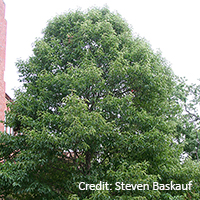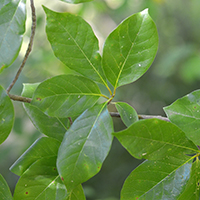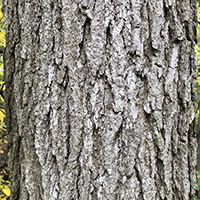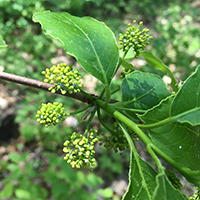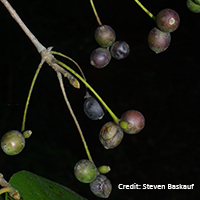What black gum looks like
Size and shape
- Reaches 20 metres high.
Leaves
- Shiny green leaves with smooth margins (5 to 12 centimetres long).
Bark
- Grey and flaky when young.
- Dark grey and ridged with age.
Flowers
- Greenish-white flowers grow in bunches or individually on long, hairy stalks.
- Bloom in late spring.
Fruit
- Fleshy, blue-black fruits (1 to 3 centimetres) with inner stone.
- Oily with thin flesh.
- Grow at the end of long stalks.
Where black gum is found
Black gum is found in parts of Southern Ontario near Lake Erie.
What you need to know to grow black gum
- Moisture: grows best in moist, well-drained soils.
- Soil: grows best in loamy, slightly acidic soils, but is tolerant of clay, gravel and sand.
- Shade: grows best in full to part sun.
- Caution: Black gum has a long taproot, making it difficult to transplant.
Benefits and uses of black gum
Wildlife benefits
Black gum fruits are a good food source for many species, including:
- fox
- pileated woodpecker
- ducks
- wild turkey
White-tailed deer and beavers eat black gum twigs and leaves. Flowers attract bees and insects. Larger trees can have cavities that wildlife use for shelter.
Commercial uses
Black gum wood was previously used to make hatters’ blocks and pistol grips. Now, the wood is used to make furniture and boxes.
Black gum trees have brightly coloured fall foliage and provide lots of shade making them an excellent landscape plant.
Fun facts about black gum
- Black gum fruits are sour — hence the common name sourgum.
- The oldest known black gum tree is more than 700 years old.
Updated: January 10, 2024
Published: July 18, 2014
